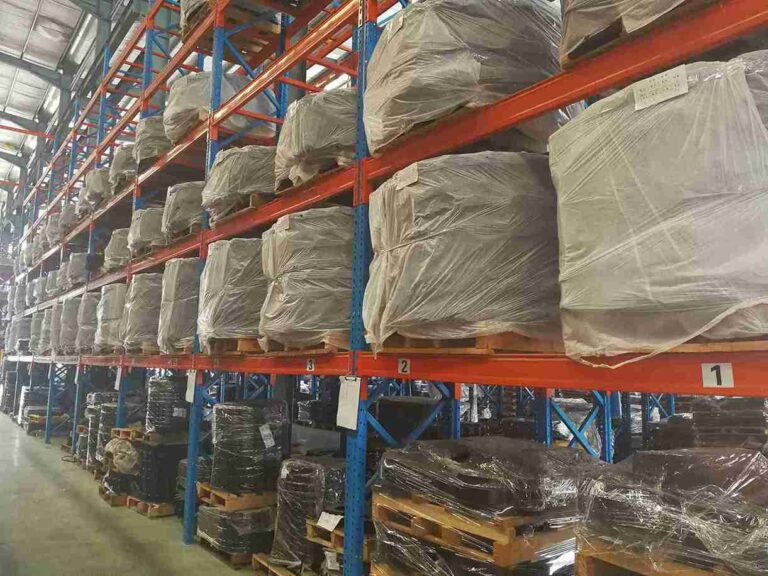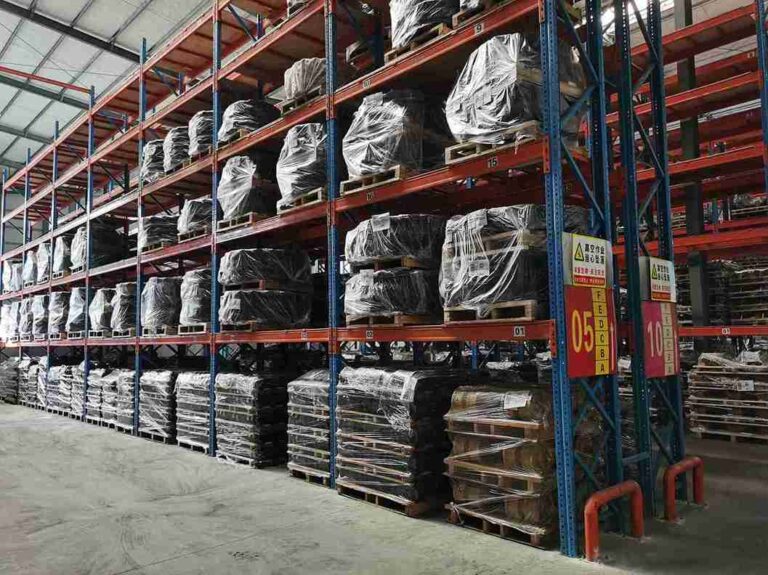📐 "First 50 Enterprise Queries Get Custom 3D Warehouse Design" Plan

Introduction: Why Beam Racking Cost Per Foot Matters in Warehouse Planning
When warehouse managers evaluate storage solutions, beam racking cost per foot becomes one of the most critical financial considerations. Unlike vague pricing estimates, understanding exactly how much beam racking costs per linear foot helps businesses budget accurately, compare suppliers effectively, and avoid unexpected expenses.
This in-depth guide provides real-world pricing data, breaks down cost factors, and reveals expert strategies to reduce beam racking expenses without sacrificing quality. Whether upgrading an existing facility or designing a new warehouse, this resource ensures informed decision-making.

H1: What Determines Beam Racking Cost Per Foot? (Key Pricing Factors)
H2: 1. Steel Type & Manufacturing Process
The beam racking cost per foot varies significantly based on material quality:
- Roll-formed beams (30 per foot) – Cost-effective for light to medium loads (3,000–6,000 lbs).
- Structural steel beams (80+ per foot) – Heavy-duty support for 8,000–15,000+ lbs.
- Galvanized vs. powder-coated finishes – Adds 10–20% to beam racking cost per foot but improves longevity.
H2: 2. Beam Length & Load Capacity
- Standard lengths (8ft, 10ft, 12ft) – Longer beams may have a lower cost per foot due to bulk material savings.
- Ultra-heavy-duty beams (15,000+ lbs) – Can exceed $100 per foot due to reinforced steel.
H2: 3. Warehouse Layout & Configuration
- Single-deep vs. double-deep racking – Double-deep setups reduce total beam racking cost per foot by maximizing space.
- Narrow aisle designs – Require specialized beams, increasing per-foot pricing by 15–25%.
H2: 4. New vs. Used Beam Racking
- New beams – Priced at 80+ per foot (higher initial cost but full lifespan).
- Used beams – As low as 40 per foot (ideal for budget-conscious buyers).
H2: 5. Installation & Additional Costs
- DIY assembly – Saves on labor but requires expertise.
- Professional installation – Adds 15 per foot to total beam racking cost.
H1: 2024 Beam Racking Cost Per Foot – Industry Price Benchmarks
H2: Entry-Level Roll-Formed Beams (30 Per Foot)
- Best for: Small warehouses, retail distribution.
- Typical load: 3,000–6,000 lbs per pair.
- Cost-saving tip: Buying in bulk reduces per-foot pricing by 5–10%.
H2: Mid-Range Structural Beams (60 Per Foot)
- Best for: Manufacturing, food storage, and automotive.
- Typical load: 8,000–12,000 lbs per pair.
H2: High-Capacity Industrial Beams (100+ Per Foot)
- Best for: Cold storage, bulk material handling.
- Typical load: 15,000–30,000+ lbs.
H2: Specialty Beams (Cantilever, Wire Deck, etc.) – 120 Per Foot
- Custom designs for unique storage needs.
H1: How to Reduce Beam Racking Cost Per Foot Without Compromising Safety
H2: 1. Buy Reconditioned Beams (Save 30–50%)
- Used beams from reputable suppliers can cut beam racking cost per foot in half.
- Always inspect for cracks, rust, or deformities before purchase.
H2: 2. Optimize Warehouse Layout for Fewer Beams
- Double-deep racking reduces the number of beams needed, lowering cost per stored pallet.
- Vertical space utilization (higher uprights) minimizes per-foot expenses.
H2: 3. Negotiate Bulk Discounts with Suppliers
- Ordering full truckloads (50+ beams) can reduce beam racking cost per foot by 8–12%.
- Ask about overstock or discontinued models for additional savings.
H2: 4. Consider Hybrid Racking Systems
- Combining selective and drive-in racking can optimize cost-efficiency per foot.
H1: Beam Racking vs. Alternative Storage Systems – Cost Comparison
H2: Beam Racking vs. Cantilever Racking
- Beam racking cost per foot: 100 (better for uniform pallets).
- Cantilever cost per foot: 120 (ideal for long, bulky items).
H2: Beam Racking vs. Drive-In Racking
- Beam racking: Lower per-foot cost, better for fast-moving inventory.
- Drive-in racking: Higher density but more expensive per pallet position.
H2: Beam Racking vs. Push-Back Racking
- Beam racking: Simpler design = lower cost per foot.
- Push-back racking: Higher throughput but 20–30% more expensive.
H1: Long-Term Value – Why Beam Racking Cost Per Foot is a Smart Investment
H2: Durability & Lifespan (20–30+ Years)
- High-quality beams retain structural integrity for decades.
- Powder-coated beams resist corrosion, reducing long-term replacement costs.
H2: Resale Value of Used Beams
- Well-maintained beams retain 50–70% of their value if resold.
H2: Operational Efficiency Gains
- Faster picking = lower labor costs.
- Modular designs allow easy reconfiguration as needs change.
H1: Frequently Asked Questions (FAQs)
H2: 1. What’s the average beam racking cost per foot for a small warehouse?
Expect 40 per foot for light-duty roll-formed beams.
H2: 2. Does beam racking cost per foot include installation?
No, installation adds 15 per foot depending on complexity.
H2: 3. How can I verify if a supplier’s beam racking cost per foot is fair?
Compare at least 3–5 quotes and check for hidden fees (freight, welding, etc.).
H2: 4. Are there financing options for beam racking systems?
Yes, many suppliers offer leasing or installment plans.
H2: 5. What’s the cheapest way to reduce beam racking cost per foot?
Used beams + DIY assembly can cut costs by 40–60%.
H1: Conclusion – Making the Best Decision on Beam Racking Cost Per Foot
Understanding beam racking cost per foot is essential for budgeting accurately and maximizing ROI. Whether choosing economical roll-formed beams or heavy-duty structural beams, the right system enhances warehouse efficiency and storage density.
For the best pricing, compare multiple suppliers, explore used options, and optimize layout design. If unsure, consult a racking specialist to ensure compliance and safety.
By making data-driven decisions, businesses can secure a high-performance storage solution that aligns with both budget and operational needs.




